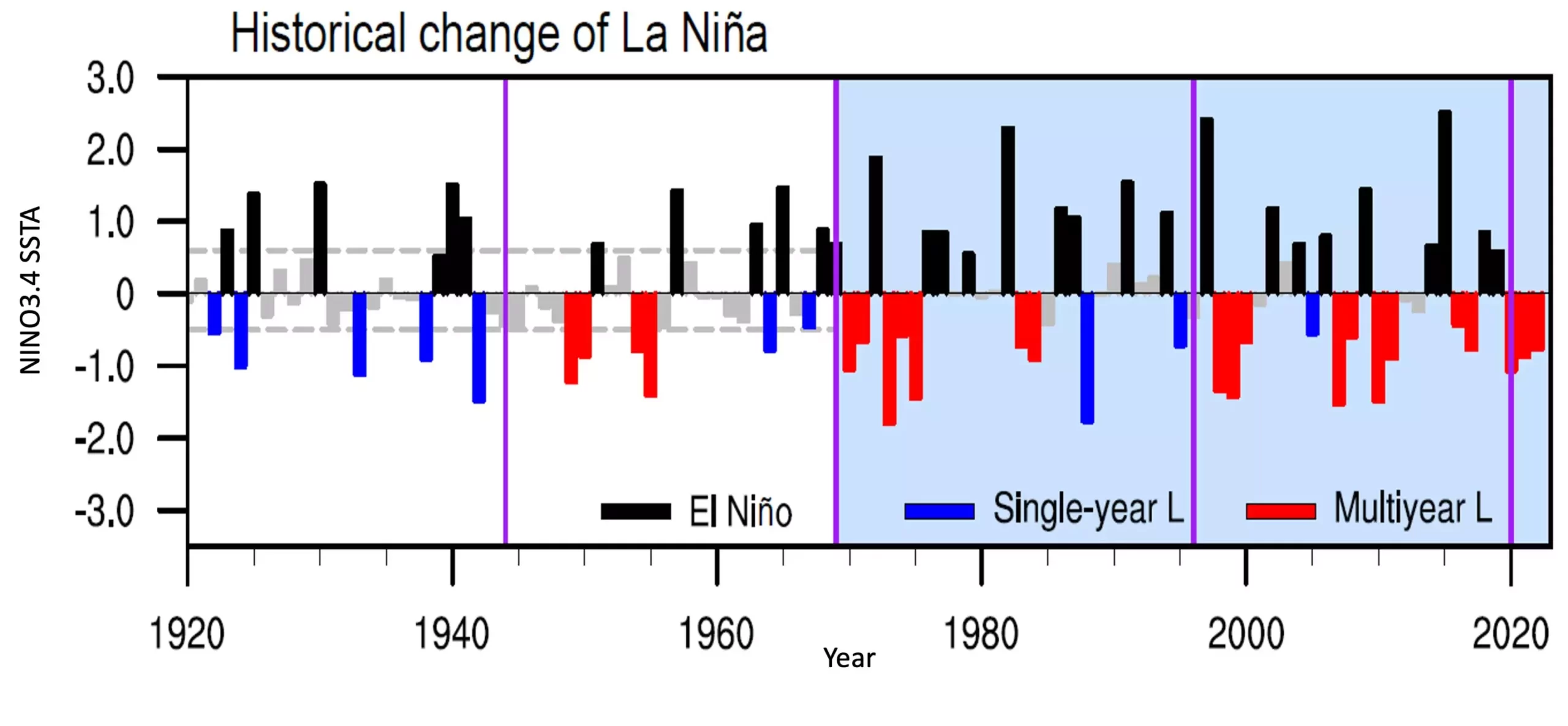The frequency of multiyear La Niña events has been observed to increase over the past century, according to a study conducted by atmospheric scientist Bin Wang from the University of Hawai’i (UH) at Mānoa. These prolonged La Niña events, lasting more than one year, have serious implications for weather patterns, ocean conditions, and various industries, such as fishing and tourism. This article explores the findings of the study, delves into the potential causes of the increasing occurrence of multiyear La Niña events, and discusses the possible consequences for communities worldwide.
Wang and his team examined a total of 20 La Niña events spanning from 1920 to 2022 to understand the underlying reasons behind the shift towards longer-lasting La Niñas. Surprisingly, the researchers found that some recent multiyear La Niña episodes did not follow the expected pattern of occurring after a super El Niño event. Instead, these events were fueled by warming in the western Pacific Ocean and steep gradients in sea surface temperature from the western to central Pacific.
The study reveals that warming in the western Pacific Ocean triggers the rapid onset and persistence of multiyear La Niña events. This finding challenges the prevailing notion that extreme El Niño and La Niña events are solely linked to eastern Pacific warming. The researchers also identified a key characteristic that distinguishes multiyear La Niñas from single-year La Niñas: a conspicuous onset rate, which indicates the intensity of the event and its potential climate impacts.
Complex computer simulations of climate support the observed association between multiyear La Niña events and western Pacific warming. These findings suggest that if the western Pacific continues to warm relative to the central Pacific, the frequency of multiyear La Niña events may further increase in the future. This has serious implications for communities worldwide, as the cumulative impacts of prolonged La Niñas can exacerbate adverse climate events and disrupt the resilience of industries like agriculture and tourism.
Potential Consequences
As multiyear La Niña events become more common, the potential consequences for communities and various industries are significant. Persistent climate extremes and devastating weather events can disrupt daily life and have long-lasting impacts on community resilience. The tourist industry, heavily reliant on stable weather patterns, may experience fluctuations and downturns. Agriculture, another sector sensitive to climate variations, could face challenges in maintaining crop yields and ensuring food security.
The increasing frequency of multiyear La Niña events, as highlighted by the study led by Bin Wang, presents a pressing concern for climate scientists and policymakers. The association between these events and warming in the western Pacific Ocean provides valuable insights into the potential causes and future projections. Recognizing the distinct factors contributing to extreme El Niño and La Niña events is crucial for understanding and mitigating their impacts. Further research and international collaboration are necessary to develop effective strategies for adapting to the changing climate patterns and minimizing the adverse consequences of multiyear La Niñas on global communities.


Leave a Reply